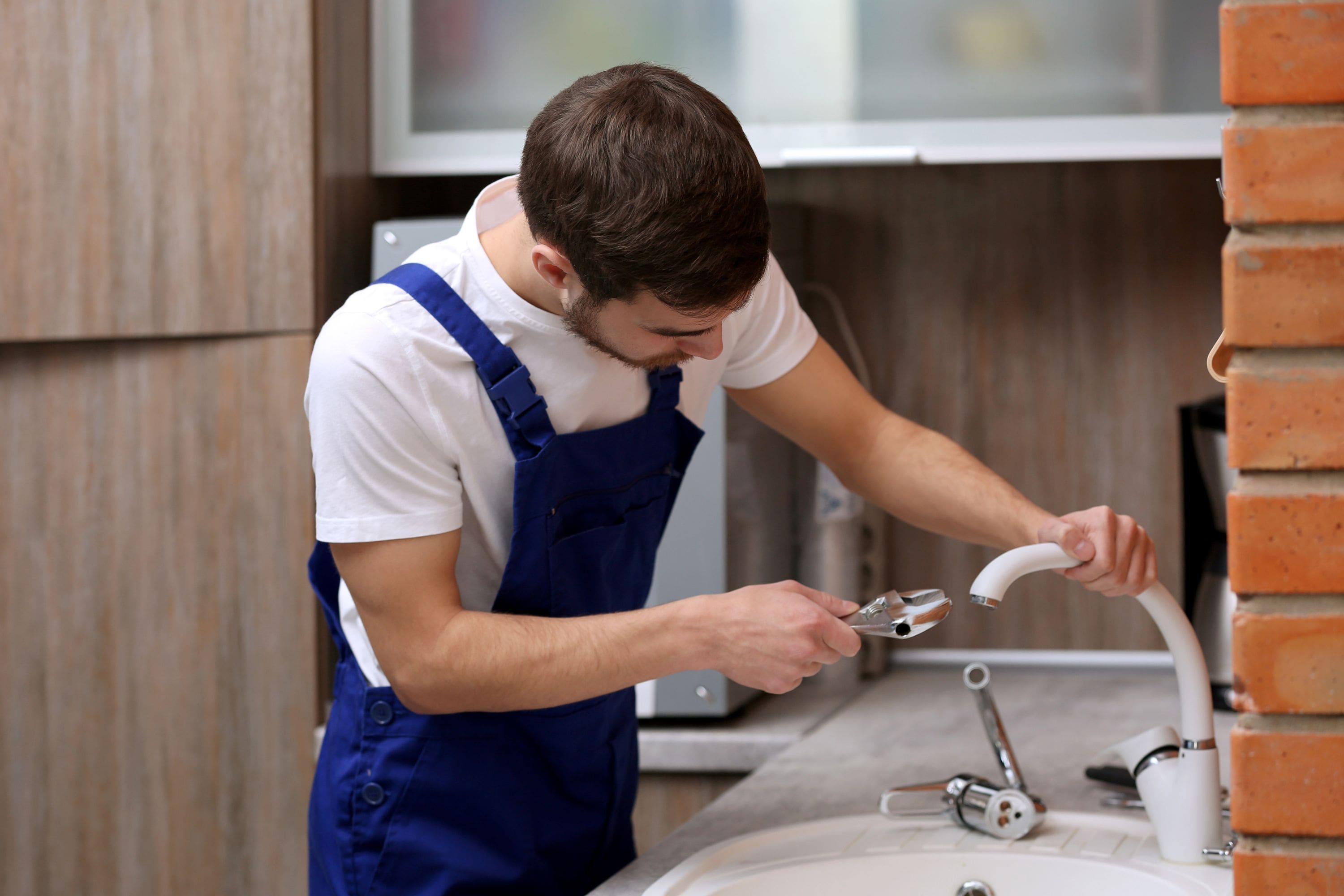Which It's Vital to Rectify a Faulty Faucet
Which It's Vital to Rectify a Faulty Faucet
Blog Article
How do you feel with regards to How to Fix a Dripping or Leaky Faucet ?

Leaking taps could look like a small trouble, yet their impact exceeds just the aggravation of the noise. From drainage to incurring unnecessary financial costs and health dangers, ignoring a dripping faucet can bring about various effects. In this short article, we'll delve into why it's vital to address this common household problem without delay and effectively.
Wastage of Water
Environmental Influence
Dripping faucets contribute dramatically to water wastage. According to the Epa (EPA), a single faucet leaking at one drip per second can lose greater than 3,000 gallons of water per year. This not only pressures water resources but also impacts ecosystems and wild animals dependent on them.
Financial Costs
Raised Water Costs
Beyond the environmental effect, leaking taps can pump up water costs significantly. The built up waste gradually converts into greater utility expenses, which can have been stayed clear of with prompt repair work.
Prospective Home Damage
Additionally, extended trickling can lead to damage to fixtures and surfaces bordering the tap. Water buildup can create discoloration, rust, and even architectural concerns if left ignored, leading to extra repair service costs.
Health Problems
Mold And Mildew and Mildew Development
The continuous presence of dampness from a leaking faucet produces an optimal atmosphere for mold and mildew and mold growth. These fungi not just jeopardize interior air quality yet also present wellness risks, especially for individuals with respiratory conditions or allergic reactions.
Waterborne Diseases
Stationary water in dripping taps can end up being a breeding place for bacteria and various other pathogens, increasing the danger of waterborne diseases. Impurities such as Legionella bacteria prosper in stagnant water, possibly resulting in major ailments when ingested or inhaled.
DIY vs. Expert Repair work
Benefits and drawbacks of Do It Yourself Repair
While some may attempt to take care of a leaking tap themselves, do it yourself fixings feature their very own set of difficulties. Without appropriate expertise and devices, DIY efforts can exacerbate the problem or bring about incomplete repair services, lengthening the problem.
Benefits of Employing a Specialist Plumber
Working with a professional plumber makes sure that the underlying reason for the leaking tap is attended to efficiently. Plumbers possess the know-how and tools to detect and fix tap concerns successfully, conserving time and minimizing the danger of additional damage.
Step-by-Step Overview to Taking Care Of a Dripping Tap
Devices Required
Before attempting to take care of a leaking faucet, gather the required tools, including a flexible wrench, screwdrivers, substitute components (such as washers or cartridges), and plumber's tape.
Common Faucet Issues and Their Solutions
Determine the kind of faucet and the specific concern creating the drip. Common issues include worn-out washers, rusty valve seats, or defective O-rings. Describe supplier guidelines or online tutorials for detailed advice on repair services.
Preventive Measures
Normal Upkeep Tips
To avoid leaking faucets, do regular maintenance such as cleansing aerators, evaluating for leaks, and changing damaged parts quickly. In addition, think about installing water-saving tools or upgrading to a lot more efficient fixtures.
Significance of Prompt Fixes
Dealing with dripping faucets as soon as they're discovered stops additional water wastefulness and prospective damages, inevitably saving both water and cash in the future.
Impact on Building Value
Assumption of Well-Maintained Residential Or Commercial Property
Keeping a residential property in good condition, consisting of attending to upkeep concerns like dripping taps, boosts its perceived worth and desirability among potential buyers or lessees.
Influence on Resale Value
Qualities with well-maintained plumbing fixtures, consisting of taps, command greater resale values in the property market. Attending to leaking faucets can add to a positive impact during building evaluations and arrangements.
Environmental Responsibility
Specific Payment to Conservation
Taking responsibility for repairing leaking faucets lines up with broader efforts towards water preservation and environmental sustainability. Every person's actions collectively make a significant influence on protecting priceless sources.
Sustainable Living Practices
By prioritizing punctual repair work and embracing water-saving behaviors, people add to lasting living practices that profit both existing and future generations.
Final thought
Dealing with a dripping tap surpasses mere ease; it's a crucial action toward conserving water, minimizing monetary prices, and protecting health and residential property. Whether with do it yourself fixings or specialist support, doing something about it to fix leaking taps is a small yet impactful way to advertise accountable stewardship of resources and contribute to a much healthier, extra lasting future.
How to Fix a Leaky Faucet: Step-by-Step Repair Guide
A leaky faucet may seem like a simple annoyance, but if it's not fixed promptly, that leak could cost hundreds to potentially thousands. From water damage to mold, mildew, and high water bills, even a tiny leak can be catastrophic if left unattended. Damage like this can even affect the overall value of your home, so it's important to take the right approach for leaky faucet repair. You may need the help of a plumber in some cases, but we've got a few tips you can try on how to fix a leaky faucet before calling the pros.
Four Faucet Types
When you're learning how to fix a leaky faucet, the first step is knowing what kind of faucet you're working with! There are four common types.
Cartridge Faucets
Cartridge faucets come in one- or two-handled varieties. In one-handled cartridge faucets, hot and cold water combines in a single cartridge. In the two-handled versions, hot and cold water are controlled separately and mixed in the faucet.
Ball Faucets
Ball faucets have a single lever you push up and down to adjust the pressure and rotate to change the temperature. A slotted metal ball controls the amount of water allowed into the spout.
Compression Washer Faucets
They're the oldest type of faucet, but they're still used in many homes — especially older ones. Compression faucets have two separate handles that, when turned, raise or lower the washer that seals a water valve. This valve stops water from flowing through the faucet when it is turned off.
Disc Faucets
Disc faucets rarely need to be repaired due to their maintenance-free design. The water flow is controlled by two discs — the upper one raises and lowers against a fixed lower disc, creating a watertight seal. If your disc faucet starts leaking, you may need to replace the seals or clean residue buildup from the inlets.
Fixing a Leaky Faucet
Step 1: Turn Off the Water
Whether you're learning how to fix a leaky bathtub faucet or how to fix a leaky kitchen faucet, always turn off the water supply to your working area when you're fixing a leak. The last thing you want is a flood added to your list of things to fix.
Look for the shutoff valves below your sink or around the tub and turn them clockwise to stop the water flow. If your faucet doesn't have shutoff valves, you may need to turn off the water for the whole house. Check to make sure it's off by turning the faucet on. If nothing comes out, you're ready to start the repair.
Step 2: Take Apart the Faucet
How you disassemble your faucet depends on the type of fixture you have. You can use a flathead screwdriver to remove the caps on top of the handle or handles for cartridge and compression faucets. Inside, you should see handle screws. Unscrew these with a screwdriver to remove the handle.
Disc- and ball-style faucets will typically have an inlet screw near the handle, and removing that will reveal the interior of the faucet.
Detach the Valve Stem
For cartridge- and compression-style faucets, you'll see the inner valve stem or cartridge once you remove the faucet handles. If you have a compression faucet, unscrew the brass valve stem. If you have a cartridge faucet, pull out the cartridge. If your cartridge has been in place for a while, it may require some tools or extra force to remove it due to mineral deposits.
Examine and Replace Parts
Once you've removed the parts, check them out to confirm what needs to be replaced. You may see corroded rubber washers, O-rings, stems, or cartridges. On a ball-style faucet, check the seats and springs for damage.
If you need to repair a leaky disc faucet, check the inlet and seals on the lower disc.
Once you determine what parts must be replaced, visit your local hardware store. Bring the damaged parts with you to ensure you can purchase the correct components to replace them.
Clean Valves and Faucet Cavity
If you've removed a stem or cartridge, you may notice mineral buildup in the faucet's threads. Use white vinegar to clean the valve seat by soaking it for a few minutes, then scrub it away with a soft toothbrush and rinse with warm water. You can also clean the interior of the faucet in the same way.
Reassemble the Faucet
Once your faucet is cleaned and the required parts have been replaced, it's time to reassemble it. Put the pieces back together and slowly turn the water supply back on. Doing this slowly is crucial because too much initial water pressure can damage the new hardware you've just installed.
https://homewarranty.firstam.com/blog/how-to-fix-leaky-faucet

Hopefully you liked our article about Should I Repair or Replace a Leaky Faucet?. Thanks a ton for spending some time to read through our posting. If you please take the opportunity to distribute this post if you enjoyed reading it. We enjoy reading our article about Why It's Important to Fix Leaky Faucets.
Report this page